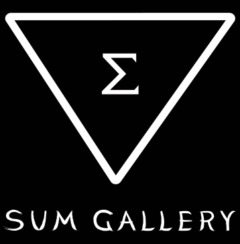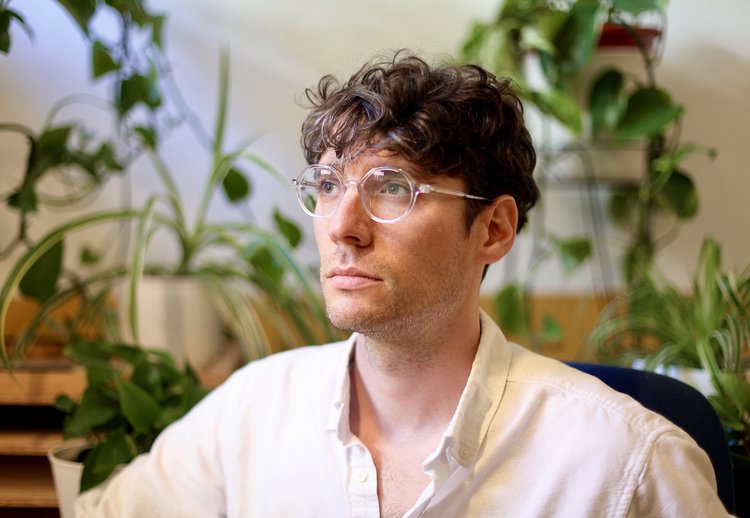With multimedia installations, 3D projections, and more, the pop-up exhibition delves into the complexity of queerness
BY GAIL JOHNSON, STIR VANCOUVER
SUM gallery and the Flavourcel Animation Collective present Centipede at the Sun Wah Centre April 7 to 9 from 12 to 6 pm. A closing reception takes place April 9 from 3 to 5 pm.
QUICK: THINK OF A centipede. What’s your gut reaction? Are you freaked out by the thought of a super-long creepy crawlie? Or are you fascinated by how so many sections of a single organism can move independently yet together? For local artists Benjamin Siegl and Harlo Martens, the “hundred-legger”, as it’s sometimes called, is more than a mere arthropod, whether it gives you the heebie-jeebies or not. It is, for one, a metaphor for the collective journey queer people go on when finding their place this world, one step at a time; the centipede is also a metaphor for the animated image, as it unfolds frame by frame. It’s also the name of a new multisensory, experimental pop-up exhibition where people are invited to crawl down into the dark depths of the Sun Wah Centre basement to experience “queerly macabre experimental animation”.
Centipede is a collaboration between SUM gallery, one of the only permanent spaces on the planet dedicated to the presentation of queer art, and the Flavourcel Animation Collective, a group of 10 artists who work collaboratively on everything from GIFs to music videos to print-media projects. Curated by Siegl, Queer Arts Festival’s assistant curator, the exhibition incorporates multimedia installation, 3D projection, soundscapes, and more, all to explore what it means to be queer today.
“We know that animation lends itself well to many things; however it does so particularly well to themes of the grotesque since we are in the business of creating illusions, which are inherently optically uncanny,” explains Martens, a Flavourcel member. “In this way, we might think of animation as a queer medium: It has the ability to take up several elemental aspects at once including light, time, space, sound, and interactiveness, especially within an environment like Sun Wah Building, where there is quite a lot of projection capacity and a rich queer history embedded into the space.
“There is a kind of natural delightfulness that is very complimentary to the macabre in animation,” Martens adds. “I find this contradiction between tones and feelings really interesting in our work, because it puts into perspective that our lives as queer and trans animators is complicated—our joy and our pain will always go hand-in-hand.” “There is quite a broad spectrum of haunting that comes with being queer.”
There will be a range of experimental animation techniques and installations found throughout the space. As participants walk around, they will shift between different pieces of sound, light, and movement.
“What can the audience expect? A fun, immersive experience in a dark damp space with weird sounds and lights—I mean, generally,” Siegl says with a laugh. “Creepy visuals, a distinctly retro-vibe, and spaces for reflection…. The exhibit really challenges conventional ideas of what animation can be or look like.
“From my perspective, and I would think the collective would agree, ‘experimental animation’ is way cool, a totally underappreciated medium,” Siegl adds, “and deserves much more representation and recognition than it currently receives, as do artists and animators who are struggling to find their place within the animation industry.”
Spooky and enchanting, Centipede explores the way queer movement was, for so long, relegated to life’s dark corners, whether in urban spaces or people’s own minds. And while queerness is slowly stepping closer to the light, its painful history is ever present.
“Because animation is so flexible, the result can often come painfully close to our real feelings,” Martens says. “There is quite a broad spectrum of haunting that comes with being queer. We can really feel trauma in our bodies, whether directly personal or as a trickle down of our historical queer necropolitical experiences. Our fears can be deeply caustic, sore, and dissociative. Our fears can be tied to specific events, or they can occur without notice and without reason. Our fears can be connected very closely to our love, to our anger, to our loss and to our power. A lot of us are also especially drawn to the idea of queer mourning/death and how we are perceived.
Siegl adds that queerness is complex: “Our joy and our pain will always go hand-in-hand. I wonder how we define this pain, where it comes from, and how to carry it into the future we aspire for ourselves. Contemporary queerness is entrenched in the past, and every queer person knows what it’s like to confront that ghost—how do we honour it, make peace with it, understand it? How do we protect ourselves and our future from it? It’s hard.”
Maybe the centipede metaphor is apt here, too. As Martens puts it: “When you are looking at Centipede, you are seeing the beauty of our singular work while also seeing how we work together and move forward together through our own obstacles.”
For more information, see https://sumgallery.ca.

